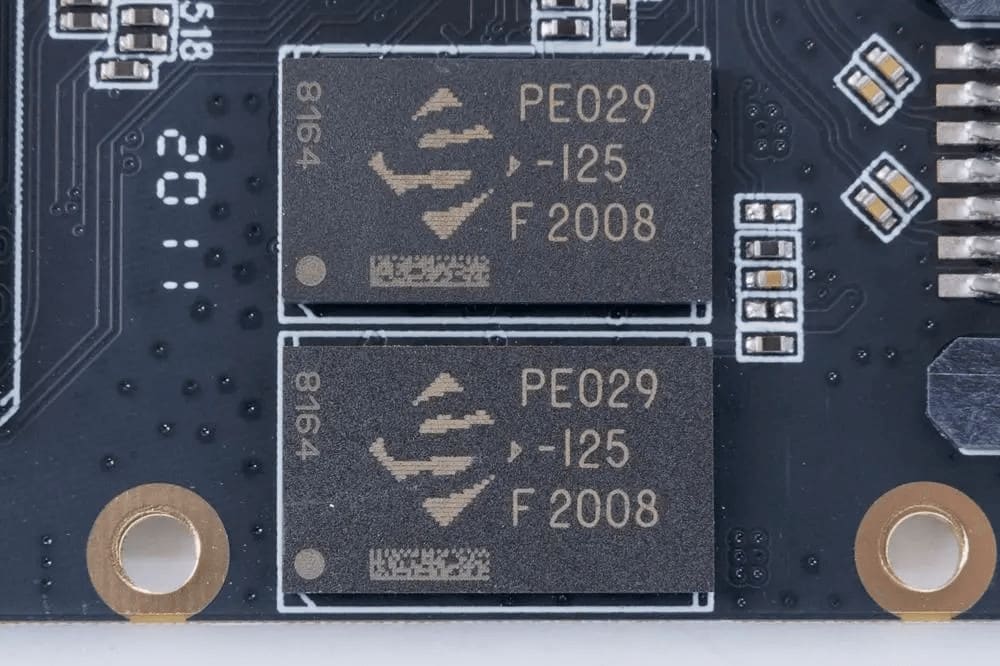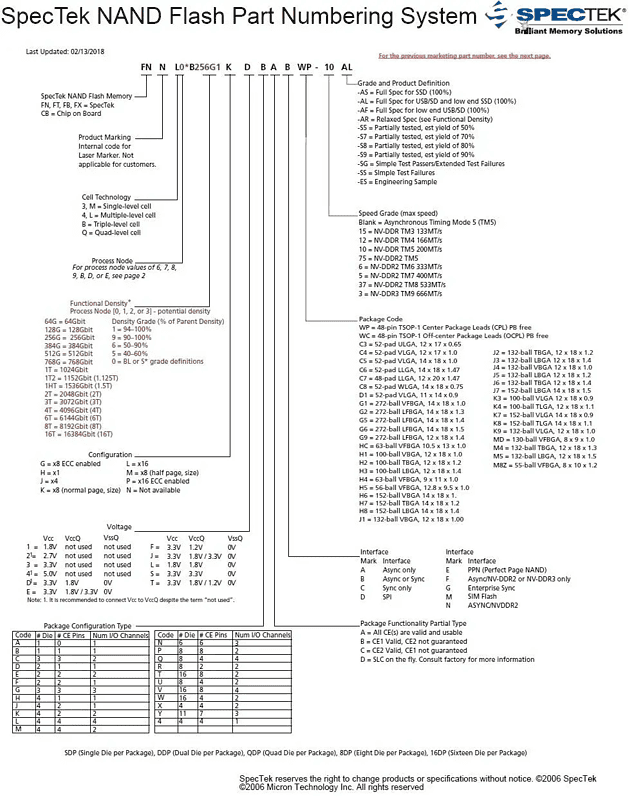In recent times, there have been repeated analyses in the industry indicating that the supply shortage of SpecTek has impacted the NAND market situation. A seasoned industry predecessor also told me, ‘The market speculation about Micron’s tight supply is actually just a resource adjustment, with no overall change.’
The term ‘Big S’ refers to SpecTek chips. Some friends might not be familiar with what exactly SpecTek (or the term ‘Big S’ chips) is. So today, I’m here to introduce to all of you what SpecTek truly is.
What are Original-Grade Chips and Downgraded Chips?
According to the chip production process, the original manufacturer packages and adds their logo to the Flash Die that has passed the tests. This is what we call original-grade chips – chips of high quality that have been carefully selected. On the other hand, chips that don’t pass the tests are considered downgraded chips. During chip production, it’s inevitable to have some chips that don’t meet the standards. However, from these substandard chips, it’s still possible to select and test some that can function properly. Therefore, storage manufacturers usually send these chips downstream to packaging factories for processing and recycling.
These downgraded chips can be roughly categorized as “white dies” and “black dies.” White dies are chips that didn’t pass all tests after the original packaging. They undergo additional testing, and if they can be used without issues, they are marked and sold in the market just like regular chips. On the other hand, “black dies” are defective chips within a wafer that don’t meet the specified standards.

When we talk about the “Big S” (SpecTek) chips here, we’re referring to white dies. SpecTek is a subsidiary of Micron, and Micron’s packaged chips that didn’t pass the initial testing are handed over to SpecTek for secondary testing. Once they pass the test, they are branded with the SpecTek logo.
Based on the testing results, there are variations in the quality of the “Big S” chips. On SpecTek’s official website, we can also determine this based on the material codes.

As shown in the above diagram, FN represents the manufacturer name, which is SpecTek. The digit immediately following FN serves as a manufacturer’s declaration, indicating that it was produced by SpecTek and is not applicable to others. The subsequent digit represents the flash memory type: M for SLC, L for MLC, B for TLC, and Q for QLC.
Moving two digits ahead, the numbers indicate the stage in the production process that flash memory testing has reached. The following number group signifies the flash memory’s capacity or capacity+density grade. The last digit in this group is denoted by H/J/K/L/M/P/N and represents the flash memory configuration. Subsequently, there’s a digit indicating the flash memory voltage.
Continuing, the next digit represents the packaging configuration (number of dies, pins, channels). The subsequent digit signifies the packaging function, where A=All, B=CE1, C=CE2, and D=SLC (simulation). The digit after that pertains to external connections and interactions.
The next number group is the packaging code, followed by a sequence of numbers representing the acceleration level, with higher values indicating better performance. Lastly, there is a designation for the flash memory level and production definition.
For regular gamers and PC enthusiasts
For regular gamers, the most important aspects of chip part numbers are flash memory capacity, flash memory type, and flash memory grade, especially the code representing the flash memory grade. From the diagram above, it’s evident that “AS” is the best and can be used to create SSD products, while “ES” is the lowest grade, usually reserved for engineering samples that might not function properly.
It’s worth mentioning that not only Micron has a company like SpecTek dedicated to handling downgraded chips, but other storage manufacturers like Samsung, Hynix, and Kioxia also have similar downstream vendors. However, these practices are not as openly known as Micron’s.
For some PC enthusiasts, discovering that they have purchased memory modules or solid-state drives with “Big S” (SpecTek) chips can be disconcerting. They might believe that these downgraded chips could significantly impact performance or lifespan. However, according to some online claims, the majority of components in the consumer market actually use white dies. The higher-quality original-grade chips are either supplied to enterprise customers or sold at higher prices. Legitimate white dies maintain good quality while being more affordable. Well-known OEM brands like Corsair and Kingston also utilize white dies.
Of course, this is under the assumption of legitimate practices. In the vast storage market, there’s a mix of good and bad. Some smaller manufacturers might pass off lower-grade chips (Saudi and UAE’s Rising AI Goals Amid China-US Chip Race) as higher quality, or even use black dies directly. While the prices might be very low, the quality often isn’t guaranteed. So, unless you possess excellent discernment skills, it’s advisable to opt for products from reputable big-name brands when purchasing storage components.

Recommended Reading:
- Discover Samsung 2025 Roadmap for Memory Advancements
- Get Ahead with Micron’s 1β DDR5 Memory Tech
- Intel Continues Selling Faulty CPUs – No Recall Planned
- AMD’s Breakthrough: The Dual-Core Age for PC CPUs
- Is Nvidia’s Success Luck? Intel Weighs In
- Top 10 Semiconductor Techs in Electronics Manufacturing
- Tensor G5 Chips by Google Now at 3nm by TSMC
- 2024: A Breakthrough Year for Advanced Packaging Tech?


